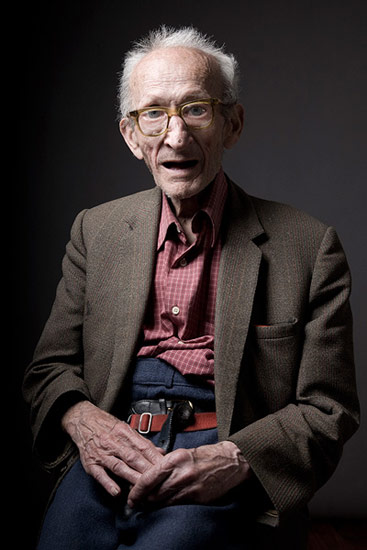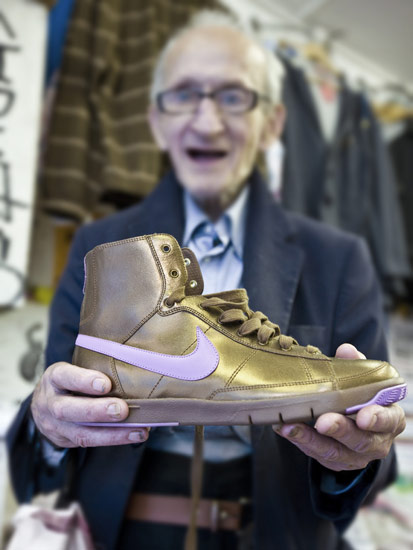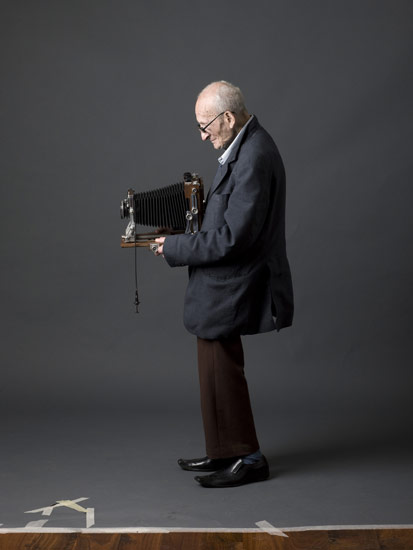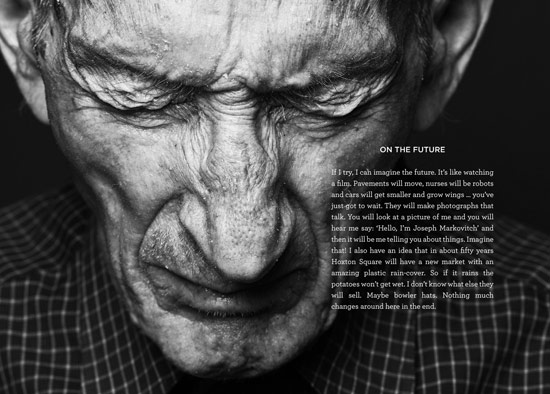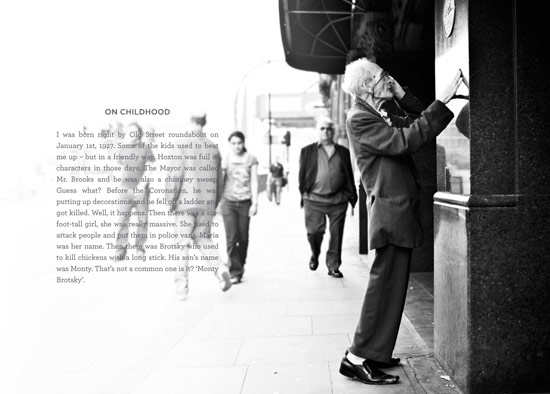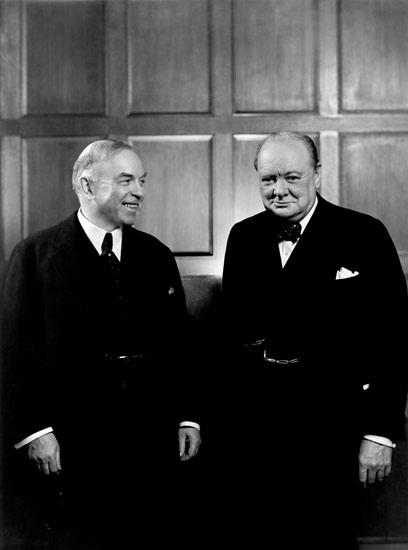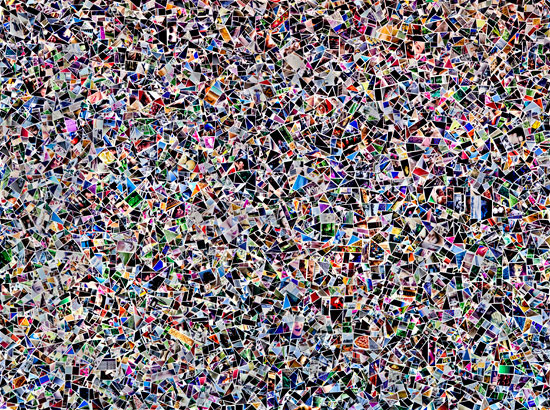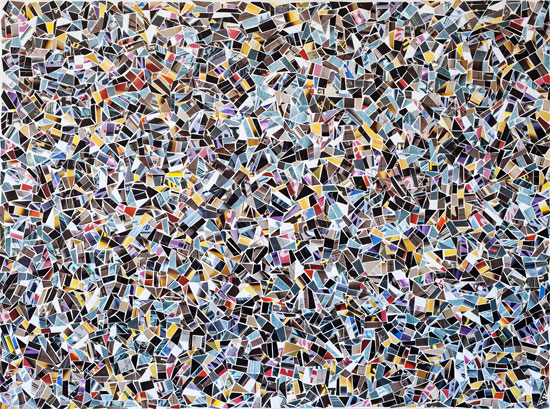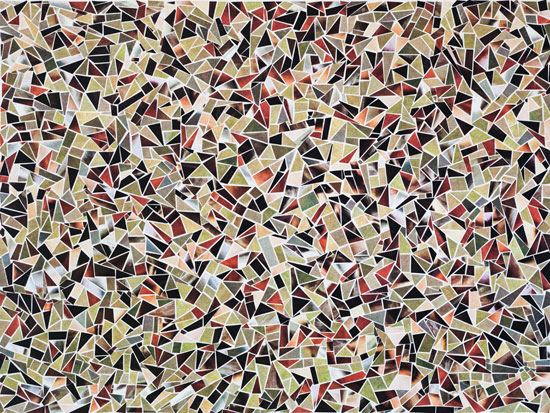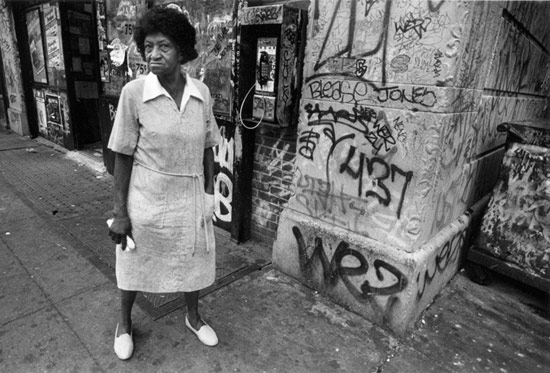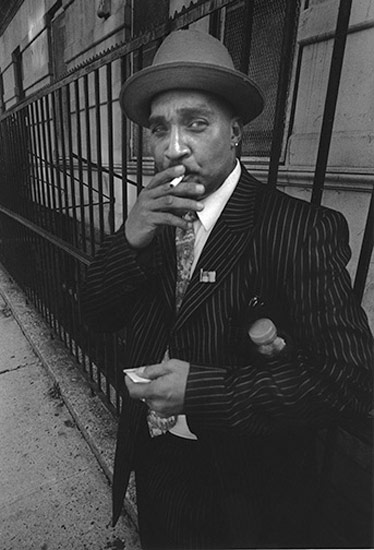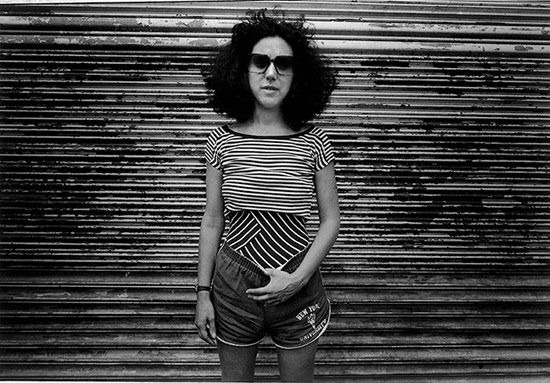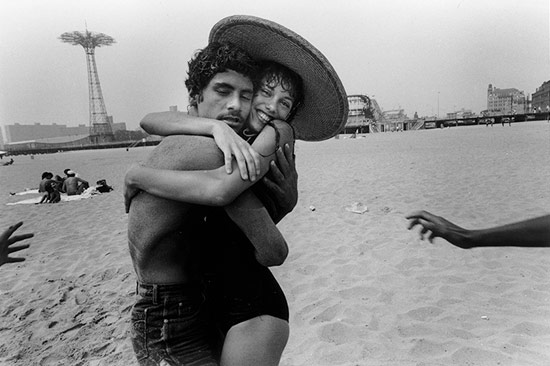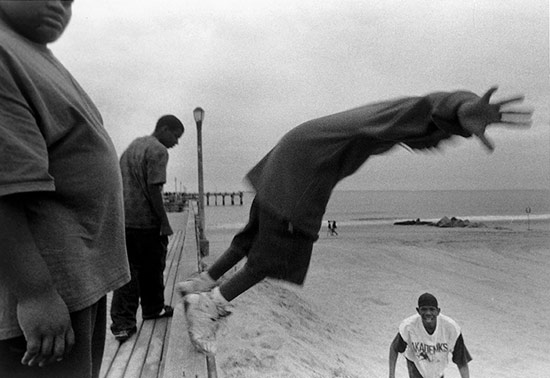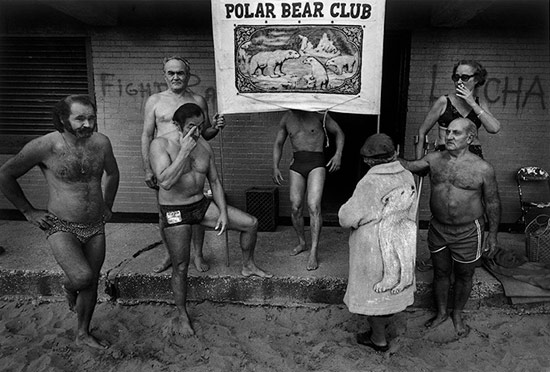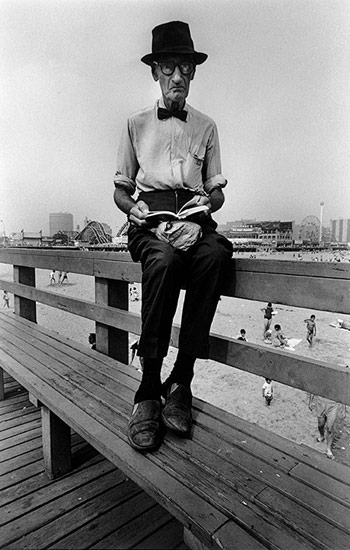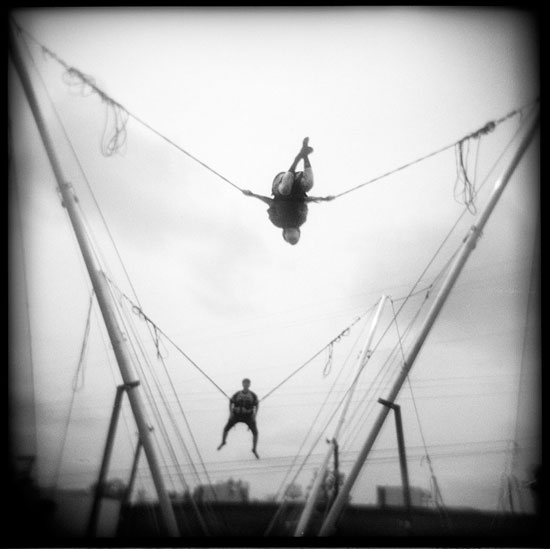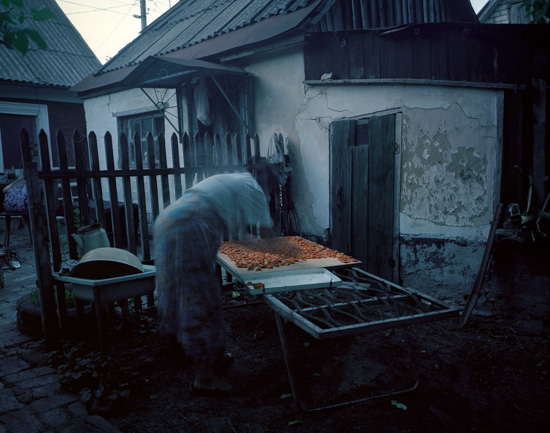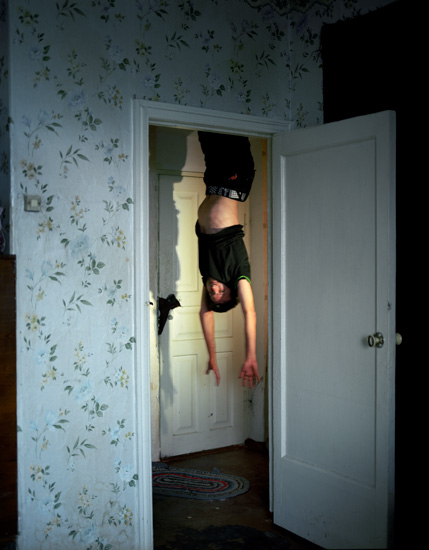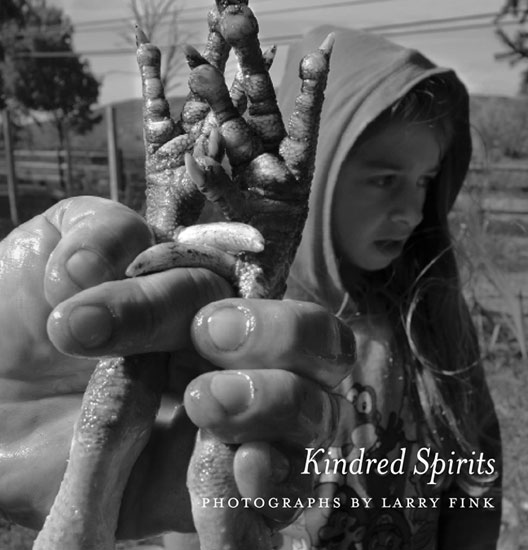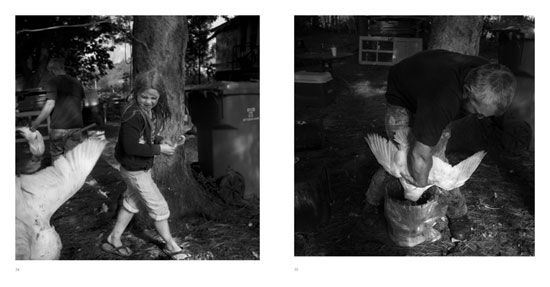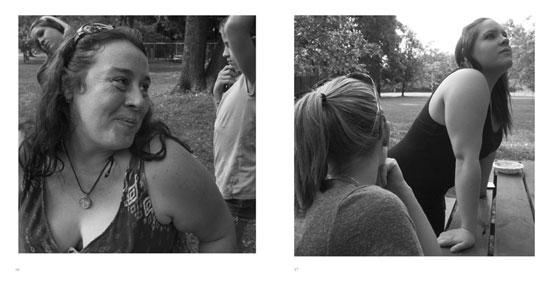Harlem Street Portraits reveals Stein's reverence and love for the friendliness and warmth of Harlem's everyday men and women, and the vibrant and bustling vitality of a historic place that has been the center of African American life and culture for over 100 years. Shooting with a wide-angle lens, Stein's close encounters with families, couples, friends, the elderly, and youth are honest, direct and involving. Each portrait is more than a depiction of a person; it is an intimate record that necessitates direct engagement between photographer and subject showing the mutuality between people.
We are pleased to have Stein here today to share his thoughts about the work he has done on this project for over a decade.
Please talk about Harlem as you know it, as a place you've described to me as "your office." What is it about the streets uptown, the people, the energies that exist on the sidewalks of this world, a place that makes public life an act of art ?
Harvey Stein: I enjoy going to Harlem since I feel it has a street intensity that isn't found in many places in New York City. It's busy, generally friendly, and really beautiful. The avenues (running north/south) are wide, broad and lovely, with old apartment buildings framing the pavements. The cross streets are often filled with brownstones and lots of trees. I have found that the people are quite friendly, open, and emotional. Indeed, the public life is robust, with people hanging out on stoops, and socializing. I seek out visually interesting environments in which to photograph people, and unfortunately in New York, these environments are being gentrified and commercialized. Harlem hasn't escaped this. It seems cleaner; there is less graffiti, nicer store fronts, new buildings and development, more white faces populating Harlem. It is changing, and I think that my images peripherally document that. But my focus is always on the people and how they interact and get along in their neighborhood.
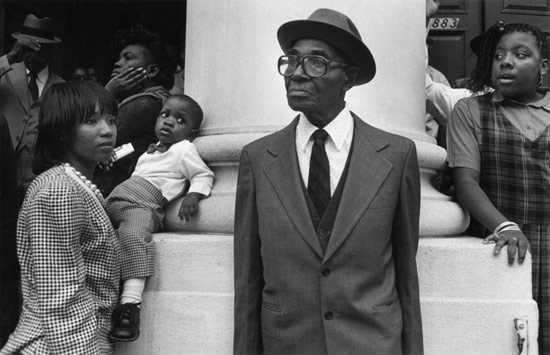
Please talk about the portrait, the way in which people compose themselves, for to be asked to be photographed is not only a compliment, but an honor. I'm always interested in the response of subjects, and how it sets the stage for the photograph. What do you enjoy most about the moment?
HS: I'm not sure that people think it's an honor or compliment to be photographed on the streets. In Manhattan, at least in midtown or downtown, I'd say that 50% of the people I approach to be photographed say no, in Brooklyn only 25% refuse, in Harlem, maybe 20% say no. It depends on the day, whether there is an event going on, how I'm working, etc., etc. Some people grudgingly say yes, others seem to really enjoy it. You never really know what the response will be until you try. And that's what I do, I try and keep trying, never getting upset by a refusal, and always keeping on. I stay cool on the streets, not showing how much I might want a shot, and always remain friendly and respectful.
I try to be casual when photographing on the street; I don't really need or want people to do anything other than to be themselves. Poses are not of interest to me, just people being natural. I ask that they look into the camera and not smile. I believe that portraits are stronger and more engaging when the face is serious, and the gaze is direct. So I guide them somewhat, and am not interested in the subjects composing themselves or performing for the camera.
My street photography is different from most other photographers in that I always try to get close, and use wide-angle lenses to reveal my subject in his/her environment and context. I want the environment to suggest things about the subject that may add another layer to the image. For me, a face is usually not enough; I want their body language, the clothes worn, and some of the foreground/background elements. Ultimately, I am seeking to make as strong and evocative an image as possible, but with permission. I don't really enjoy photographing people candidly; this feels empty to me.
Please talk about that moment of connection, when you, your subject, and your camera connect, capturing a fraction of a second forevermore. After all these years shooting, do you know you "have it"? What do you think that illustrious yet elusive "it" is in the act of street photography ?
HS: I like to think about freezing time with my images, that a person or scene I just photographed will never exist like this again except in the photograph. Nothing makes the passing of time and hence aging more vivid than photography.
I try to speak to my subjects; I want them to be aware of me as I am of them. Perhaps it validates my existence. I seek a collaboration and connection between us, even if very fleeting. I think I enjoy this moment because I am curious and learning something about the person. And learning something about myself. That is my "high".
I sometimes think "wow, that was a great shot, that person really worked with me", and it will result in a wonderful image. It's a feeling not always correct. And it doesn't happen often. For me, that elusive "it" in street photography is when I do make a strong connection with an individual, when we might talk for a few minutes, share the passing scene, and that I photograph 5-10 frames and think I've made a really good image. It's rare, and since I still shoot mostly film on the streets, it takes weeks if not months, sometimes years to realize what I did.
Stein's archive includes many wonderful bodies of work. Here are some of my favourites from his series 'Coney Island 40 Years."



